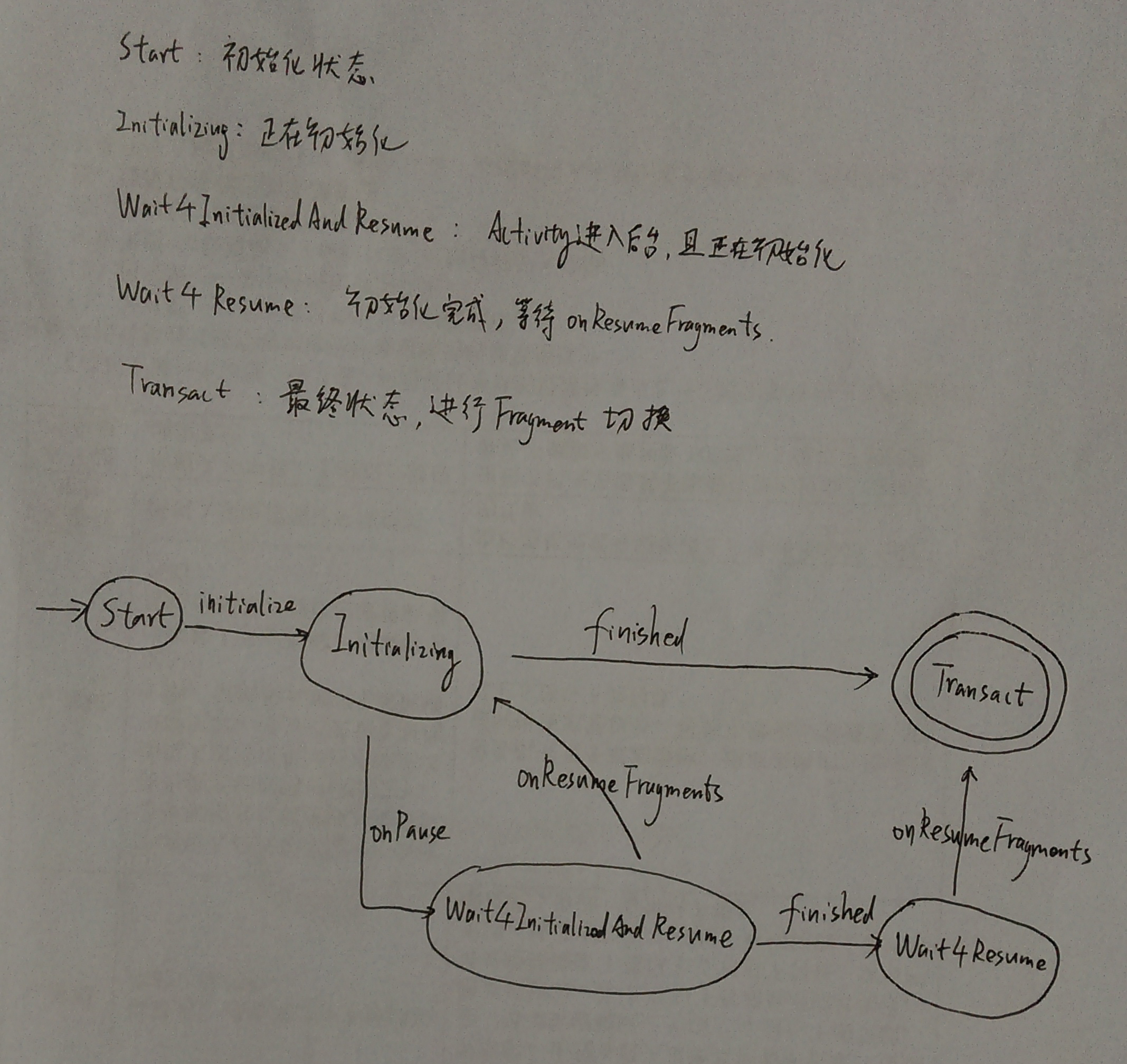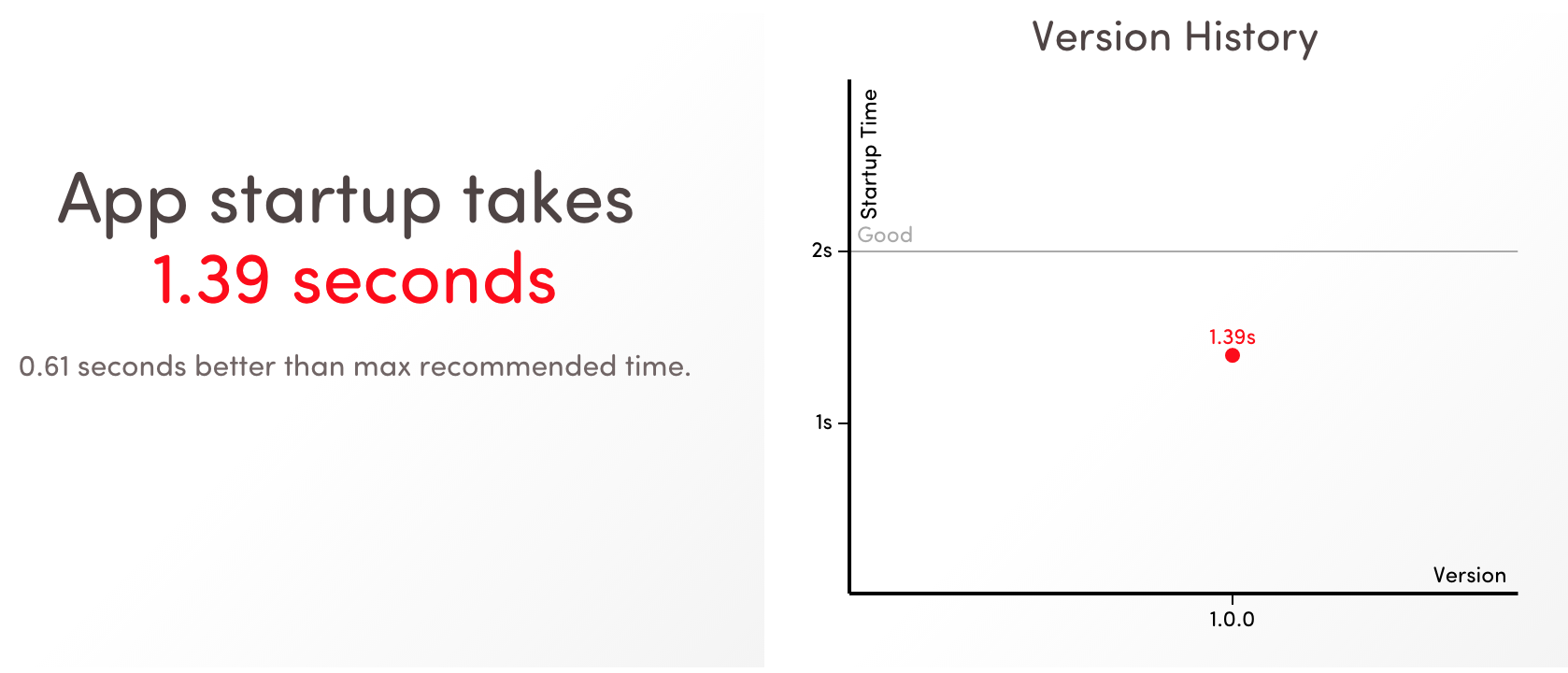随着APP的不断开发,启动时(Application类的onCreate函数中)需要做的事情越来越多,这将导致APP冷启动(杀死进程后的第一次启动)变慢,有分析表明,APP冷启动时间大于2s时,大部分用户将失去耐心。
提升APP启动速度
其实并不是所有的事情都需要在Application类的onCreate函数中执行,例如一些第三方库的初始化,可以专门增加一个SplashActivity来初始化这些第三方库,但是同样的道理,如果这些初始化工作放到SplashActivity的onCreate函数中执行,APP的冷启动依然很慢,进一步的尝试是把这些初始化工作异步化。
另外如果使用Dagger来实现依赖注入,还应该避免在Application类中注入依赖,毕竟创建依赖对象也是需要时间的,更多关于这个细节请阅读。
实践
在我的AndroidTDDBootStrap repo中,我就尝试创建了一个SplashActivity,在其onCreate函数中首先显示一个SplashFragment,该Fragment用于显示启动页面,与此同时在后台线程进行初始化工作(使用rx),初始化完成后,再切换到新的GithubSearchFragment。
此时的代码是这样子的:
@Override
protected void onCreate(final Bundle savedInstanceState) {
super.onCreate(savedInstanceState);
mFragmentManager = getSupportFragmentManager();
mFragmentManager.beginTransaction()
.add(android.R.id.content, new SplashFragment(), SPLASH_FRAGMENT)
.commit();
Observable.create(subscriber -> {
Timber.plant(new Timber.DebugTree());
Fresco.initialize(mApp);
// simulate heavy library initialization
try {
Thread.sleep(10 * 1000);
} catch (InterruptedException e) {
Timber.e(Constants.ERROR_LOG_FORMAT, TAG, e);
}
subscriber.onNext(true);
subscriber.onCompleted();
}).subscribeOn(Schedulers.io()).observeOn(AndroidSchedulers.mainThread())
.subscribe(success -> {
mFragmentManager.beginTransaction()
.remove(mFragmentManager.findFragmentByTag(SPLASH_FRAGMENT))
.add(android.R.id.content, new GithubSearchFragment(), GITHUB_SEARCH_FRAGMENT)
.commit();
});
}
Activity State Loss
第一次测试运行一切OK,但是当我在初始化过程中按下home键,过了10s后app crash了,报错:
java.lang.IllegalStateException: Can not perform this action after onSaveInstanceState
原来是发生了Activity state loss。更多关于Activity state loss的细节请阅读。
那么如何避免这一问题呢?总的来说就是一旦Activity onPause了,初始化工作仍然后台执行,完成后先别急着切换Fragment,应该等到onResumeFragments时再切换Fragment。
这一句话说得简单,但背后涉及的逻辑/实现却比较复杂,如何等到onResumeFragments时再切换Fragment,用一个flag变量?初始化过程中又已经onResumeFragments了怎么办,如何记录当前所处状态?这其实是一个状态转换的过程,可以抽象为一个有穷状态自动机,手绘状态机如下:

EasyFlow
EasyFlow是用Java实现的轻量级有穷状态自动机,API也比较简洁,虽然已较长时间没有更新,但是作者依然能回应issue。
我采用了EasyFlow来实现上述自动机,这里有一点需要指出,由于Activity启动的时候,onResumeFragments也会被调用一次,所以仍需要用一个flag变量特殊处理一下,这里确实不太优雅,但我也没想到更好的办法,欢迎提建议!
public class SplashActivity extends BaseActivity implements HasComponent<SplashComponent> {
private static final String SPLASH_FRAGMENT = "SplashFragment";
private static final String GITHUB_SEARCH_FRAGMENT = "GithubSearchFragment";
private static final String RELEASE = "release";
private static final int TIME = 10000;
private static final String TAG = "SplashActivity";
@Inject
TemplateApp mApp;
private SplashComponent mSplashComponent;
private FragmentManager mFragmentManager;
private EasyFlow<StatefulContext> mFlow;
private final StatefulContext mStatefulContext = new StatefulContext();
private boolean mIsPaused;
@Override
protected void initializeInjector() {
mSplashComponent = TemplateApp.get(this)
.visitorComponent()
.plus(getActivityModule(), new SplashModule());
mSplashComponent.inject(this);
}
@Override
protected void onCreate(final Bundle savedInstanceState) {
super.onCreate(savedInstanceState);
mFragmentManager = getSupportFragmentManager();
mFragmentManager.beginTransaction()
.add(android.R.id.content, new SplashFragment(), SPLASH_FRAGMENT)
.commit();
initFlow();
mFlow/*.trace()*/.start(mStatefulContext);
}
private void initFlow() {
mFlow = FlowBuilder.from(State.Start)
.transit(on(Event.Initialize).to(State.Initializing)
.transit(on(Event.Finish).finish(State.Transaction),
on(Event.Pause).to(State.Wait4InitializedAndResume)
.transit(on(Event.Resume).to(State.Initializing),
on(Event.Finish).to(State.Wait4Resume)
.transit(on(Event.Resume).finish(
State.Transaction)))))
.executor(new UiThreadExecutor());
mFlow.whenEnter(State.Start, context -> {
context.setState(State.Start);
Observable.create(subscriber -> {
Timber.plant(new Timber.DebugTree());
try {
mFlow.trigger(Event.Initialize, mStatefulContext);
} catch (LogicViolationError logicViolationError) {
Timber.e(Constants.ERROR_LOG_FORMAT, TAG, logicViolationError);
}
Fresco.initialize(mApp);
// simulate heavy library initialization
try {
Thread.sleep(10 * 1000);
} catch (InterruptedException e) {
Timber.e(Constants.ERROR_LOG_FORMAT, TAG, e);
}
subscriber.onNext(true);
subscriber.onCompleted();
}).subscribeOn(Schedulers.io()).subscribe(success -> {
try {
mFlow.trigger(Event.Finish, mStatefulContext);
} catch (LogicViolationError logicViolationError) {
Timber.e(Constants.ERROR_LOG_FORMAT, TAG, logicViolationError);
}
});
}).whenEnter(State.Transaction, context -> {
context.setState(State.Transaction);
mFragmentManager.beginTransaction()
.remove(mFragmentManager.findFragmentByTag(SPLASH_FRAGMENT))
.add(android.R.id.content, new GithubSearchFragment(), GITHUB_SEARCH_FRAGMENT)
.commit();
});
}
@Override
protected void onResumeFragments() {
super.onResumeFragments();
if (mIsPaused) {
try {
mFlow.trigger(Event.Resume, mStatefulContext);
} catch (LogicViolationError logicViolationError) {
Timber.e(Constants.ERROR_LOG_FORMAT, TAG, logicViolationError);
}
}
}
@Override
protected void onPause() {
super.onPause();
mIsPaused = true;
try {
mFlow.trigger(Event.Pause, mStatefulContext);
} catch (LogicViolationError logicViolationError) {
Timber.e(Constants.ERROR_LOG_FORMAT, TAG, logicViolationError);
}
}
@Override
public SplashComponent getComponent() {
return mSplashComponent;
}
/**
* Init state enum.
* TODO modify EasyFlow to avoid enum.
*/
enum State implements StateEnum {
Start, Initializing, Wait4InitializedAndResume, Wait4Resume, Transaction
}
/**
* Init event enum.
* TODO modify EasyFlow to avoid enum.
*/
enum Event implements EventEnum {
Initialize, Pause, Resume, Finish
}
}
EasyFlow通过enum定义状态和触发状态切换的事件,对于安卓平台来说,使用enum不是一个好的方式,会影响性能,这一点需要改进。
实测
经过测试,在初始化过程中按下home键,然后又重新返回APP,如此反复多次,也不会发生Activity state loss了,并且能及时切换Fragment,APP启动速度也很可观,使用NimbleDroid进行测试,APP冷启动耗时1.39s,击败了绝大多数应用市场上的APP :) 。

当然这只是个玩笑,但是在模拟中加了一个10s的sleep,足以应对日后可能的初始化需求了。
完整的代码可以在AndroidTDDBootStrap repo中获取。